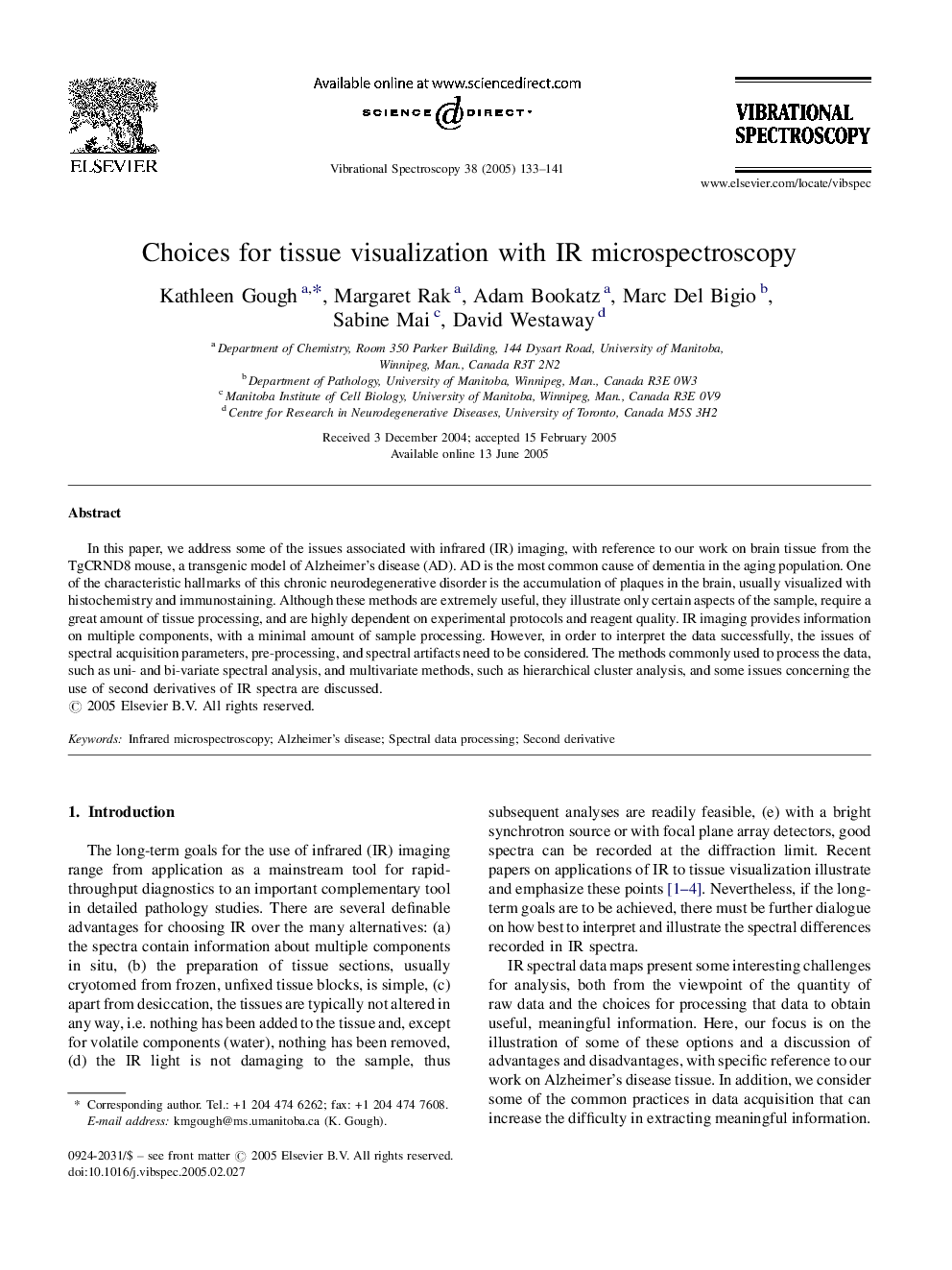| Article ID | Journal | Published Year | Pages | File Type |
|---|---|---|---|---|
| 9757465 | Vibrational Spectroscopy | 2005 | 9 Pages |
Abstract
In this paper, we address some of the issues associated with infrared (IR) imaging, with reference to our work on brain tissue from the TgCRND8 mouse, a transgenic model of Alzheimer's disease (AD). AD is the most common cause of dementia in the aging population. One of the characteristic hallmarks of this chronic neurodegenerative disorder is the accumulation of plaques in the brain, usually visualized with histochemistry and immunostaining. Although these methods are extremely useful, they illustrate only certain aspects of the sample, require a great amount of tissue processing, and are highly dependent on experimental protocols and reagent quality. IR imaging provides information on multiple components, with a minimal amount of sample processing. However, in order to interpret the data successfully, the issues of spectral acquisition parameters, pre-processing, and spectral artifacts need to be considered. The methods commonly used to process the data, such as uni- and bi-variate spectral analysis, and multivariate methods, such as hierarchical cluster analysis, and some issues concerning the use of second derivatives of IR spectra are discussed.
Related Topics
Physical Sciences and Engineering
Chemistry
Analytical Chemistry
Authors
Kathleen Gough, Margaret Rak, Adam Bookatz, Marc Del Bigio, Sabine Mai, David Westaway,
